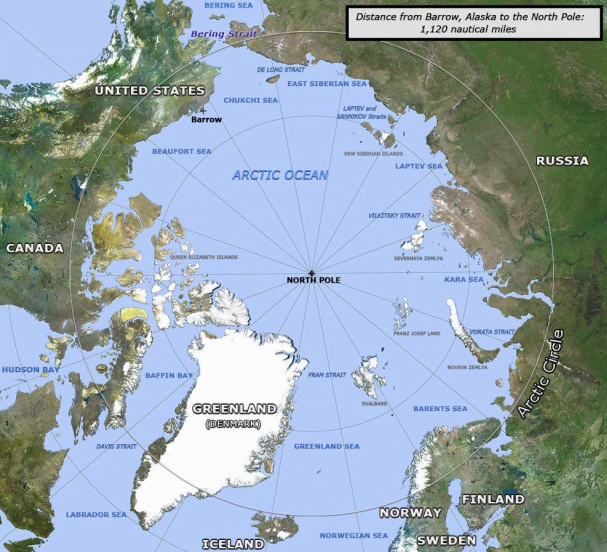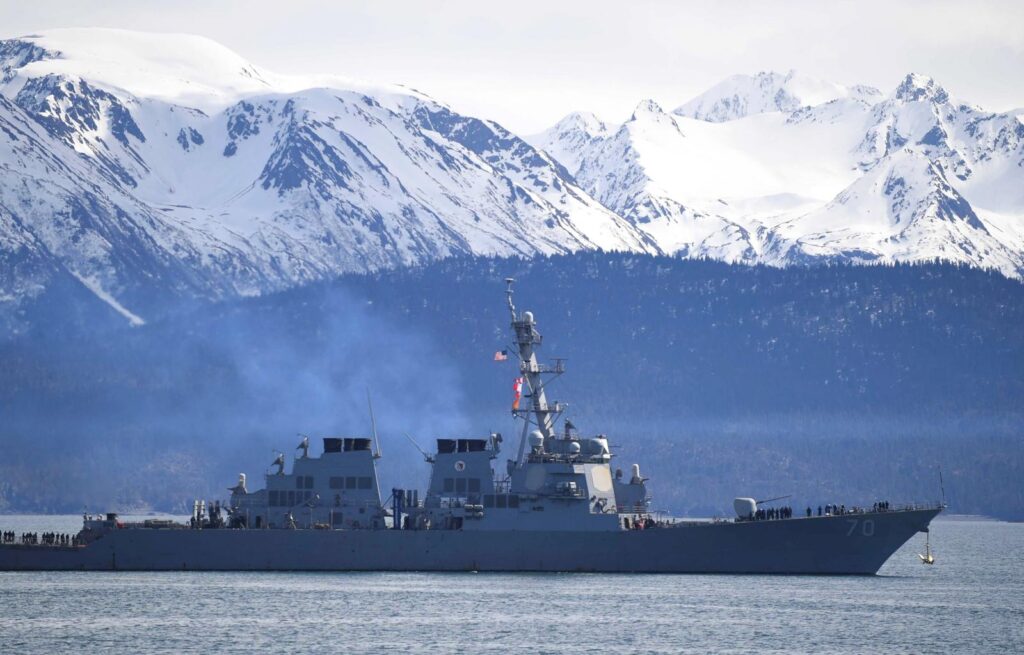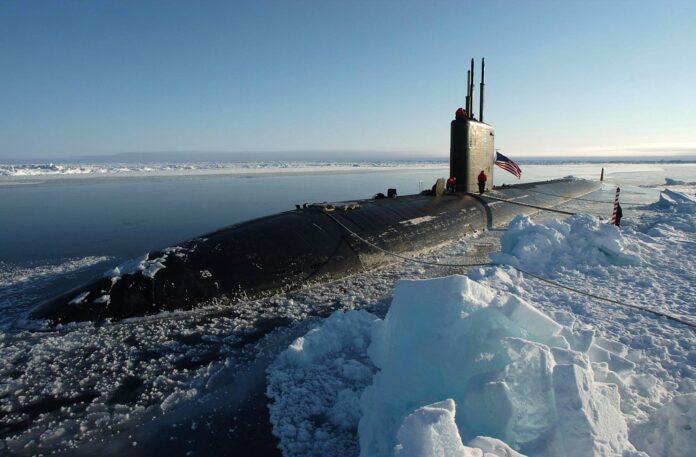To maintain the Naval Superiority depends on winning the great power struggle in the Arctic.
The Arctic Region (also known as the North Pole) consists of 14.5 million square kilometers: including the borders of Greenland, Norway, Canada and Russia. The North Ice Sea, which is accepted by the International Hydrographic Organization (IHO) as an ocean, includes the Beaufort Sea, the Barents Sea, the Kara Sea, the White Sea, the Greenland Sea and the Bering Sea. 88 % percent of the ocean is the Exclusive Economic Zone (EEZ) of the coastal countries, while 12 percent is in high seas status. Despite containing the world’s smallest ocean, the Arctic Region has the potential to connect nearly 75% of the world’s population— as melting sea ice increases access to shorter maritime trade routes linking Asia, Europe and North America.
The geopolitical environment for the Arctic has been substantially affected by the renewal of great power competition. The region holds an estimated 30% of the world’s undiscovered natural gas reserves, 13% percent of global conventional oil reserves, and one trillion dollars’ worth of rare earth minerals. Of the oil and gas reserves present in the Arctic, an estimated 84% likely reside offshore. Fish stocks are expected to continue to shift northward, attracting global fishing fleets and creating potential challenges to the current international prohibition on Arctic fishing.

The Arctic is increasingly viewed as an arena for geopolitical competition among the United States, Russia, and China.
In recent years, Russia has enhanced its military presence and operations in the Arctic, and the United States, Canada, and the Nordic countries have responded with their own increased presence and operations. China’s growing diplomatic, economic, and scientific activities in the Arctic have become a matter of increasing curiosity or concern among the Arctic states and other observers.
In the near future, the Arctic Region will become a geostrategic center of interest with new sea lines of communication that will cut the transportation time between Asia and Europe by half, hydrocarbon deposits, and rare metals. The idea of bringing hydrocarbon deposits and minerals (especially rare metals), which have been surfaced because of the rapidly melting glaciers in the Arctic due to the global warming, to the world economy; and bringing up the issue of alternative sea lines of communications (especially the Northwest Passage) to the agenda has made the region one of the new centers of the world geopolitically. The Arctic region will be ice-free during the summer by the middle of the 21st century.
According to World Trade Organization data for 2017, trade between Asia, Europe and North America, which constitutes 88% of world trade, will be done through the Arctic soon. While the total distance that products brought from Asia to Europe via the Panama Canal is 12,600 nautical miles, the distance is reduced to 7,900 nautical miles via the Arctic Northwest Passage.
The fact that the Northwest Passage has become available for maritime transport for the first time since 1978 has the potential to geostrategically resemble the great change caused by the opening of the Suez Canal in the 19th century.
Competing views of how to control increasingly accessible marine resources and sea routes, unintended military accidents and conflict, and spill-over of major power competition in the Arctic all have the potential to threaten U.S. interests and prosperity. The People’s Republic of China views the Arctic Region as a critical link in its One Belt One Road initiative. China wants to take advantage of this opportunity by implementing the Polar Silk Road and Blue Economic Transition initiatives that will connect Europe and China through the Arctic.
The US is pursuing a three-legged strategy to maintain control in the Arctic Region
The US is pursuing a three-legged strategy to maintain control in the Arctic Region.:
» Maintain Enhanced Presence
» Strengthen Cooperative Partnerships
» Build a More Capable Arctic Naval Force
U.S. naval forces participate in a wide spectrum of regional exercises. The submarine-focused Ice Exercise (ICEX) has been held in the Beaufort Sea and the Arctic Ocean since the 1960s, making it the longest-running Arctic exercise. NATO Exercise Trident Juncture marked the largest post-Cold War exercise in the region, bringing together nearly 50,000 personnel, 65 ships, and 250 aircraft for a collective defense exercise in Norway and surrounding waters. During Operation Northern Edge, US exercised joint operations with 10,000 personnel from the USS Theodore Roosevelt Carrier Strike Group, Air Force, Army, and Marines – all united in efforts to enhance interoperability and improve operational capabilities.
Finally, the US Department of The Navy published a document “A Strategic Blueprint for the Arctic”, which outlines how to use naval power in the Arctic Region. The USA’s ability to maintain its global power depends on maintaining its superiority in the seas and oceans. Therefore, the U.S. must win the great power struggle in the Arctic Region. In the case of China’ achieve its goals, it will weaken US naval power by creating new sea lines communications beyond US control.




